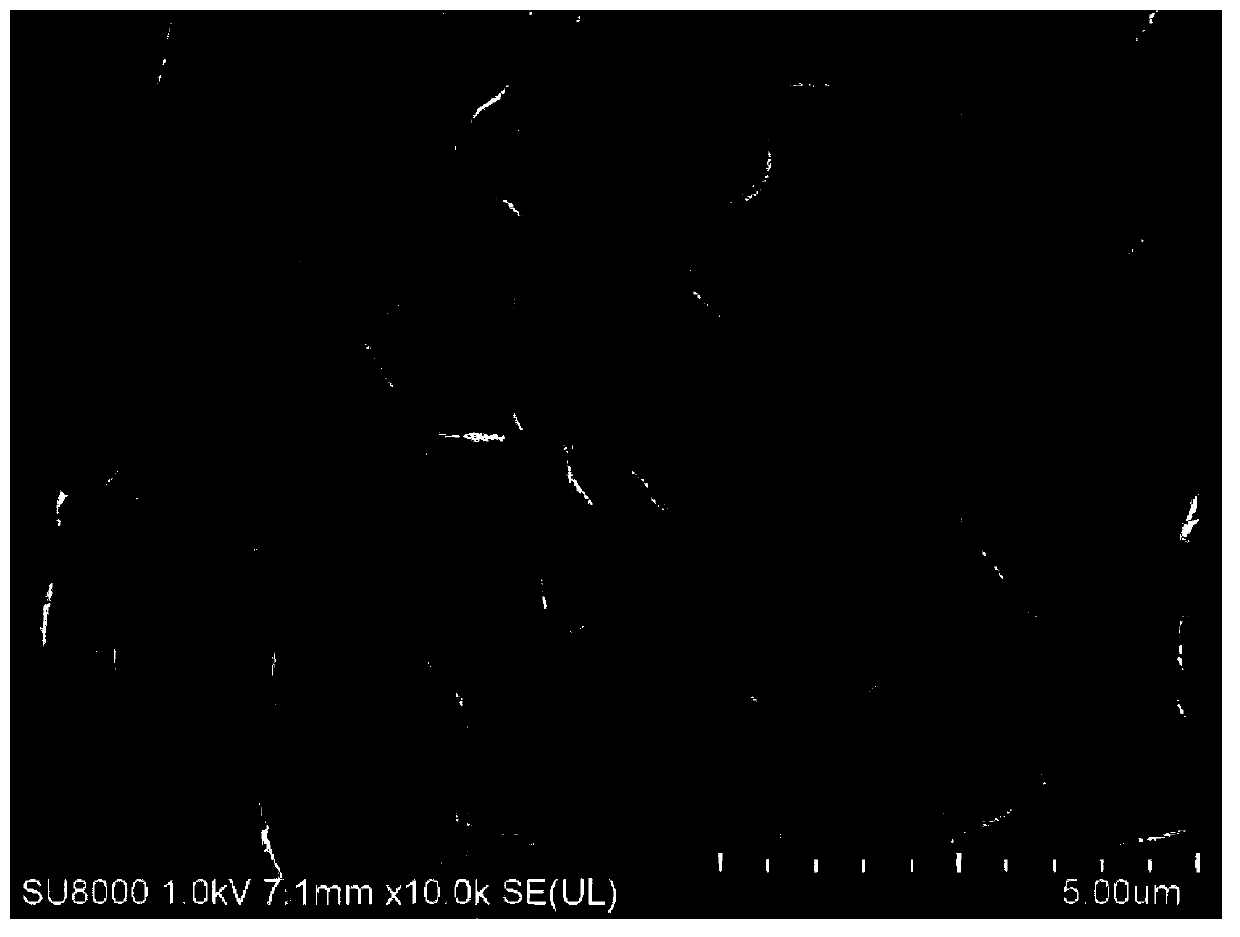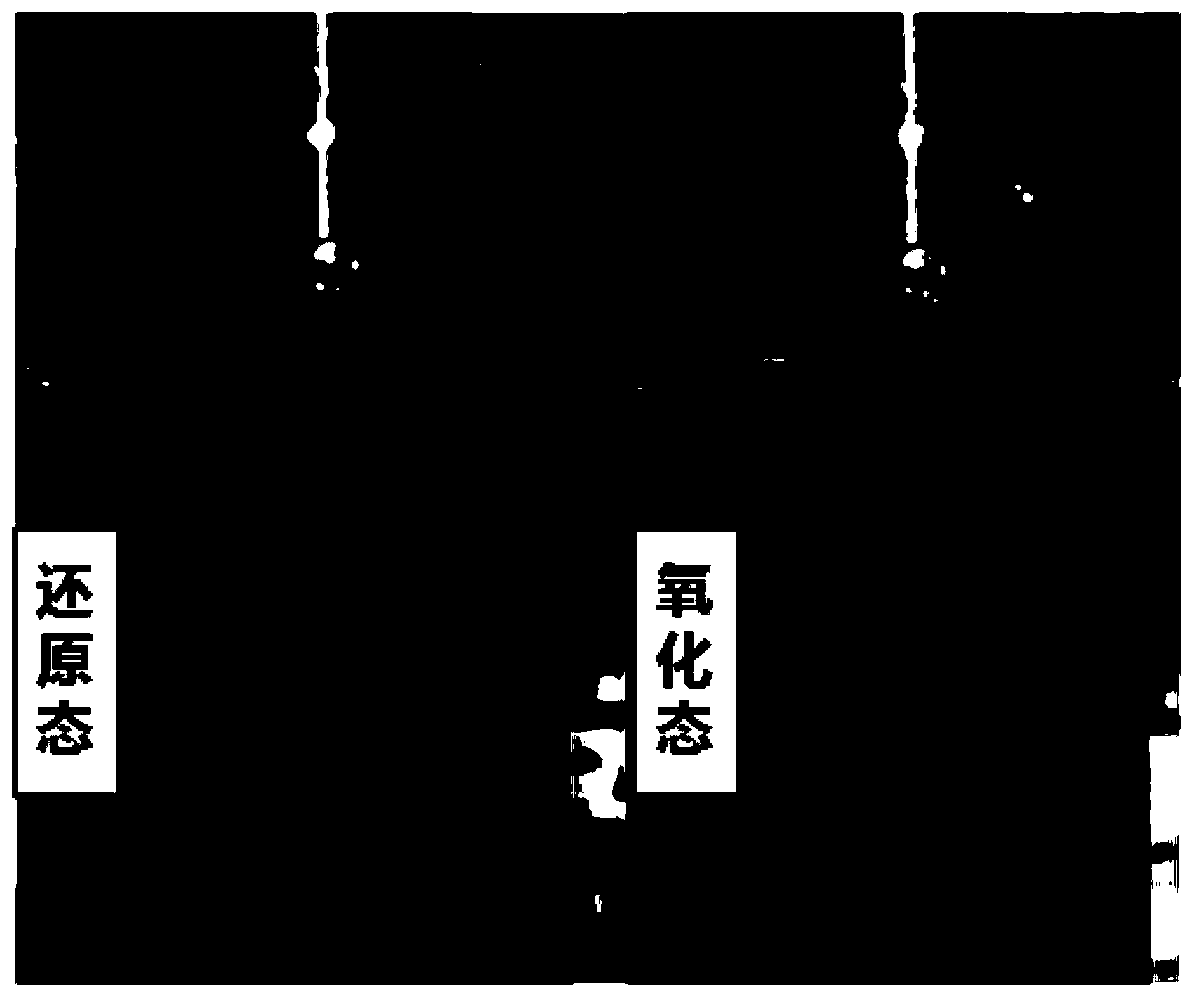Preparation method of nickel oxide/poly(3,4- ethylenedioxythiophene) compound electrochromic film
An ethylenedioxythiophene and electrochromic technology, which is applied in the field of nickel oxide/poly(3), can solve the problems of insufficient organic-inorganic composite, unstable physical and chemical combination, incompatibility of preparation process, etc., and achieves overcoming optical properties. Poor, wide application prospects, improve the effect of poor optical performance
- Summary
- Abstract
- Description
- Claims
- Application Information
AI Technical Summary
Problems solved by technology
Method used
Image
Examples
Embodiment 1
[0027] Immerse the FTO conductive glass in deionized water, acetone and ethanol in sequence for ultrasonic cleaning for 20 minutes, and dry it for later use. Weigh 1.24g of nickel acetate tetrahydrate and 0.6g of urea and dissolve them in 56mL of absolute ethanol, then intrude the ultrasonically cleaned FTO conductive glass into the hydrothermal kettle containing the reaction solution, the reaction solution accounts for 75% of the volume of the hydrothermal kettle , kept at 180°C for 6 hours, and finally cooled naturally to room temperature, took out the FTO conductive glass, washed it with water and ethanol, dried it, and calcined it at 400°C for 2 hours to obtain the FTO conductive glass with NiO layer; take 0.425mL3, 4-Ethylenedioxythiophene monomer is dissolved in 200mL0.1mol / L lithium perchlorate propylene carbonate solution to obtain a deposition solution, and the above-obtained FTO conductive glass with a NiO layer is placed in the deposition solution as a work Electrod...
Embodiment 2
[0029]The FTO conductive glass was sequentially immersed in deionized water, acetone and ethanol for ultrasonic cleaning for 25 minutes, and dried for later use. Weigh 1.24g of nickel acetate tetrahydrate and 0.6g of urea and dissolve them in 56mL of absolute ethanol, then intrude the ultrasonically cleaned FTO conductive glass into a hydrothermal kettle filled with a reaction solution, and the reaction solution accounts for 70% of the volume of the hydrothermal kettle , kept at 170°C for 12 hours, and finally cooled naturally to room temperature, took out the FTO conductive glass, washed it with water and ethanol in turn, dried it, and calcined it at 400°C for 4 hours to obtain the FTO conductive glass with NiO layer; take 0.425mL3, 4-Ethylenedioxythiophene monomer is dissolved in the propylene carbonate solution of lithium perchlorate of 200mL0.3mol / L to obtain deposition solution, the FTO conductive glass with NiO layer obtained above will be placed in deposition solution as...
Embodiment 3
[0031] The FTO conductive glass was sequentially immersed in deionized water, acetone and ethanol for ultrasonic cleaning for 25 minutes, and dried for later use. Weigh 1.44g of nickel acetate tetrahydrate and 0.70g of urea and dissolve them in 56mL of absolute ethanol, then intrude the ultrasonically cleaned FTO conductive glass into the hydrothermal kettle containing the reaction solution, the reaction solution accounts for 75% of the volume of the hydrothermal kettle , kept at 160°C for 12 hours, and finally cooled naturally to room temperature, took out the FTO conductive glass, washed with water and ethanol in turn, dried, and calcined at 500°C for 3 hours to obtain FTO conductive glass with NiO layer; take 0.213mL3, The 4-ethylenedioxythiophene monomer is dissolved in the propylene carbonate solution of lithium perchlorate of 200mL0.2mol / L to obtain the deposition solution, and the FTO conductive glass with the NiO layer obtained above will be placed in the deposition sol...
PUM
| Property | Measurement | Unit |
|---|---|---|
| pore size | aaaaa | aaaaa |
Abstract
Description
Claims
Application Information
 Login to View More
Login to View More - R&D
- Intellectual Property
- Life Sciences
- Materials
- Tech Scout
- Unparalleled Data Quality
- Higher Quality Content
- 60% Fewer Hallucinations
Browse by: Latest US Patents, China's latest patents, Technical Efficacy Thesaurus, Application Domain, Technology Topic, Popular Technical Reports.
© 2025 PatSnap. All rights reserved.Legal|Privacy policy|Modern Slavery Act Transparency Statement|Sitemap|About US| Contact US: help@patsnap.com



